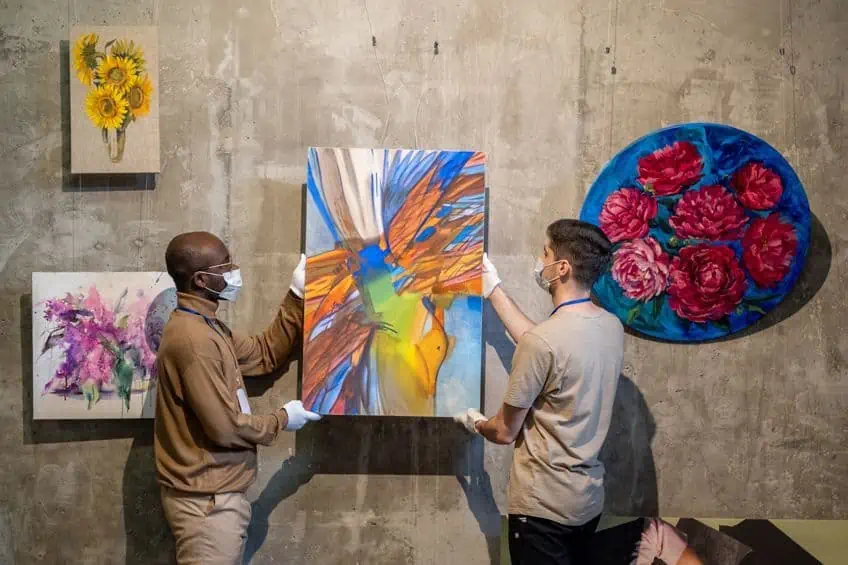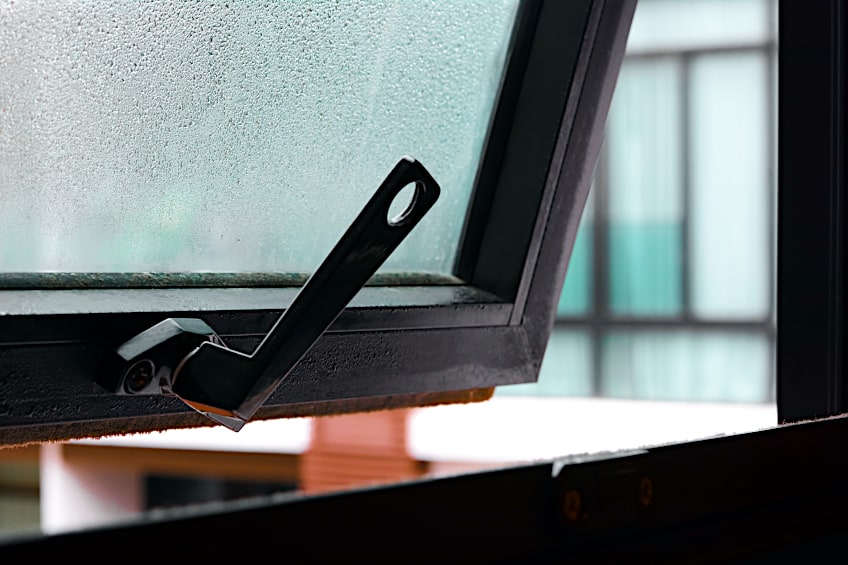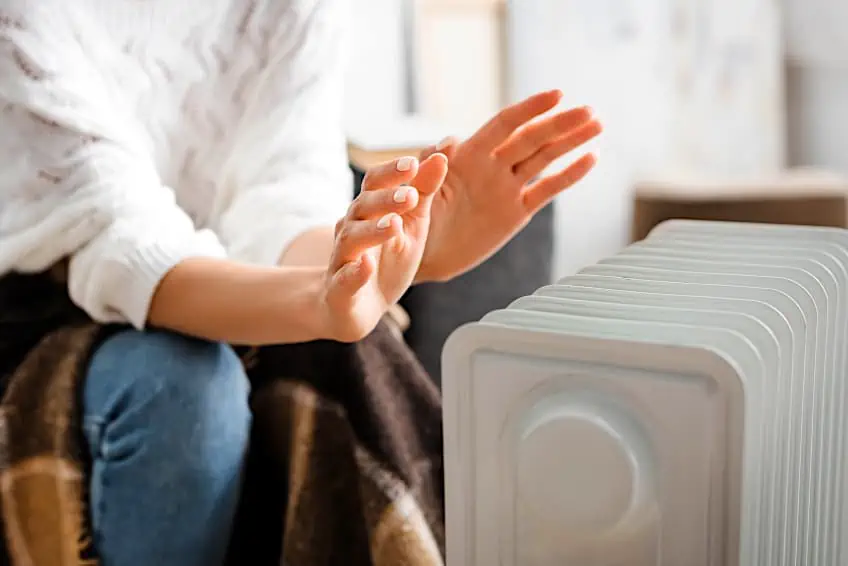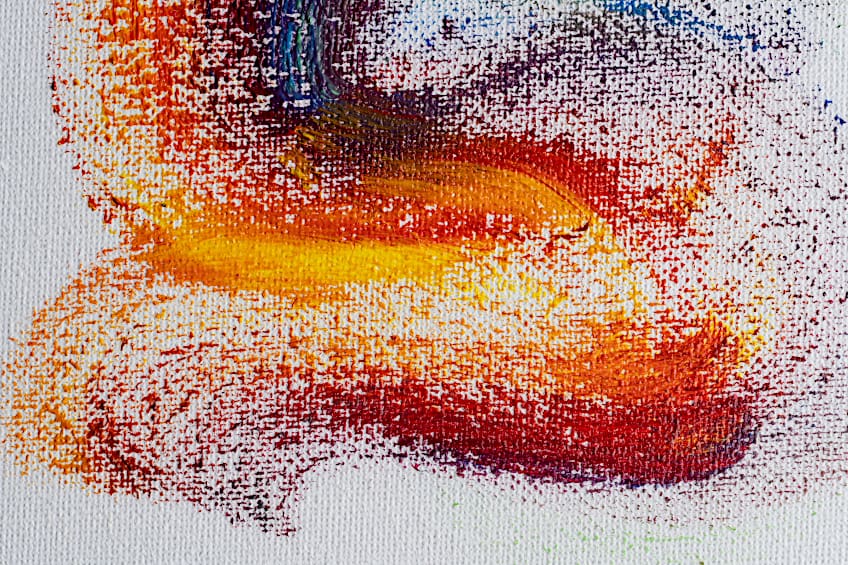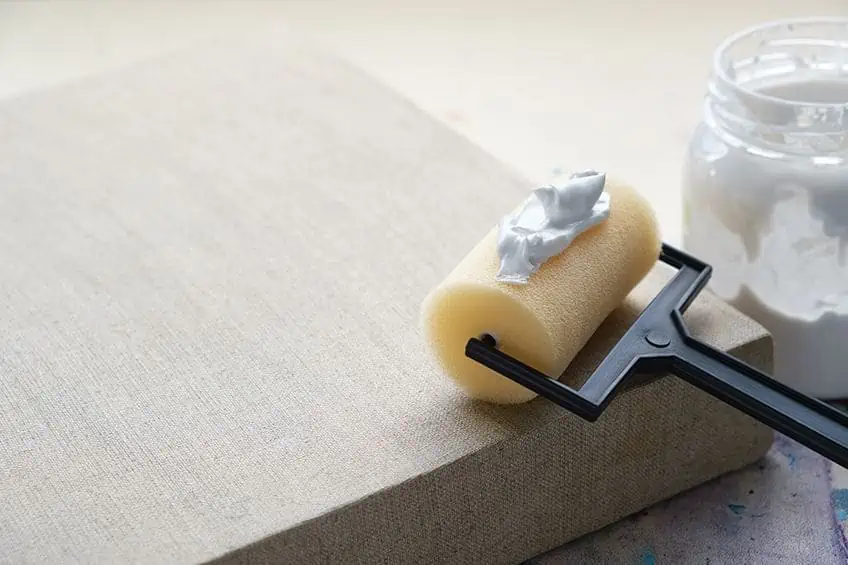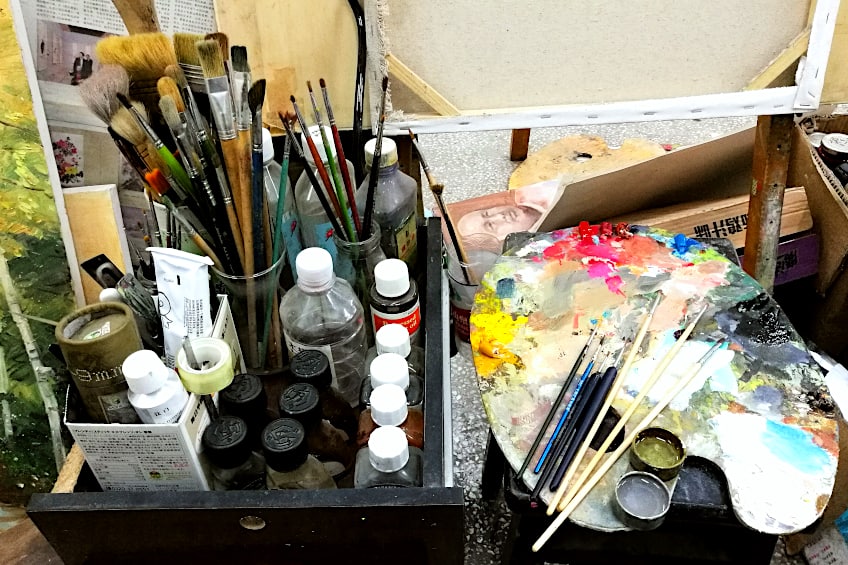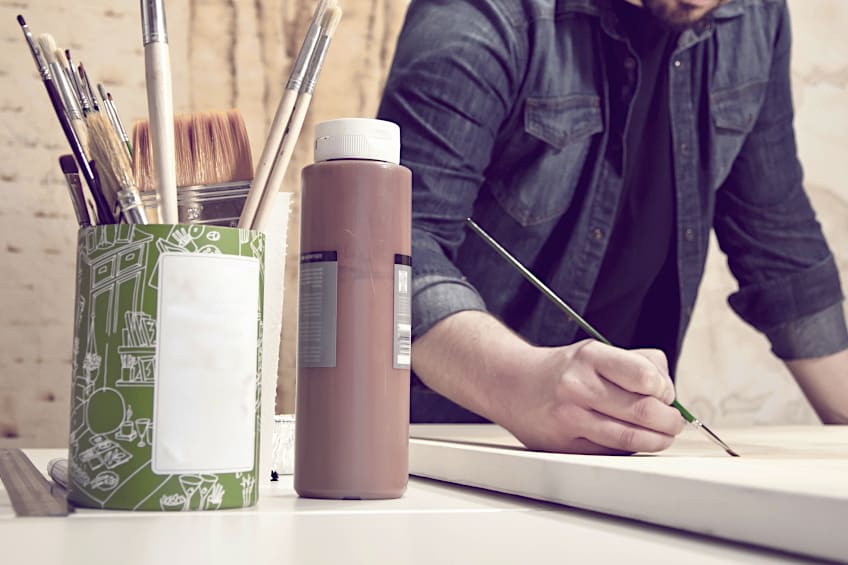How to Make Oil Paint Dry Faster – Artist’s Oils Drying Time Guide
Oil paints are vibrant but slow-drying paints. While this allows them to be blended easily to create beautiful colors, it can also be a major downside to working with them, as you have to wait much longer in between coats compared to other mediums. Their slow drying time also makes storing and transporting them much more difficult, so knowing how to make oil paint dry faster is a valuable skill to learn. Below, we have compiled a few helpful tricks that can help make oil paints dry faster!
What Are Oil Paints
Oil paints have been used by artists since the 7th century to create colorful pieces full of depth and layers. Oil paints contain paint pigments that have been suspended in an oil such as linseed or walnut oil. The same slow drying properties that allow oil paints to be flexible, easy to alter, and the colors blend effortlessly, also make it very long to dry.
How Long Do Oil Paints Take to Dry?
Unlike water-based paints such as acrylic and watercolors, oil paint does not actually dry through evaporation. Oil paints oxidize or cure, which is what causes the paints to harden. Most of the oxidizing takes place within the first days or months, but the process never actually stops even after the painting is dry to the touch, this is why you should wait several months before varnishing as less time drying means more likely to crack.
Traditional oil paints do not contain any water to evaporate, rather the oils react with the air. It can take months for thick paint to dry completely and some impasto paintings have even been known to take up to two years. Newer, water-soluble oils are a fast-drying oil paint that dries through a combination of evaporation and curing, so dry quicker than traditional oils but slower than completely water-based paints.
Why Would You Want Oil Paints to Dry Faster
Oil paint dries starting with the topmost layer and works its way down. This means that very thick paint will remain wet for months as the bottom layers take longer to dry under the skin formed by the top layers. Long drying times can create problems with meeting deadlines or transporting your pieces. Slow-drying paint also leaves your art vulnerable since you cannot varnish it until the paint has almost completely cured.
On non-porous surfaces such as primed metal, oil paint will not be absorbed as with a canvas. This results in even longer drying times as the bottom layers are not exposed to much air for them to cure. You can see how knowing how to make oil paint dry faster can be useful to preserve and protect your paintings.
How to Make Oil Paints Dry Faster
While there are no fast-drying oil paints, there are several ways that you can speed up its drying time, each with its pros and cons. Your oil paint dry times are influenced by a number of different factors. Things such as your environment, the brand and pigment of your paints, and even the techniques you use all affect how fast your oil paint takes to dry.
Change Your Environment
The conditions that you paint and store your oil piece play an important role in the time that your oil paint takes to dry. Painting and storing your piece in an area that is well-ventilated, warm, and dry will significantly decrease its drying time. Creating the perfect conditions for drying is a simple and cost-effective way to make your oil paints dry faster.
To increase air circulation around your painting, open the windows or add a fan in the room. It is important to exercise caution with this method, as any dust or pet hair will get churned up by the increased circulation and might stick to your paint or varnish.
Oil paints cure much slower in cold environments, so warming up your room will also decrease the drying time of your paints. The simplest method of warming your space is to add a heater to your room. However, if you do not own a heater, and you live in a warm climate, you could place your finished painting in any warm area that is out of direct sunlight. Popular methods include putting it in a box, so that it is protected from dust and dirt, and then keeping it in the back of your car or on top of the fridge for a few days.
Humidity has a large impact on how fast your oil paints will dry. The higher the humidity of your environment the longer your paints will take to dry. Use a dehumidifier to lower the moisture in the air and keep the painting away from more humid spaces such as the kitchen, bathroom, basement, and laundry room.
Use Heat
Adding heat to your paintings is another method for how to dry oil paint fast. Higher temperatures speed up the oxidizing reaction that dry oil paints, so can be used to speed up drying time. Facing the back of your painting towards a heater or the sun is a great way to add heat to your painting without spending any money on special equipment. While sunlight should never shine directly on your piece, by warming the back of the canvas the oils on the front will not dry too quickly and allow the paint in the lower layers to cure faster. Ensure your heater is not too hot. It should feel warm but not warm enough to burn your skin.
Using a heat gun is another method of heating your oil painting to make it dry faster. When using a heat gun, do not let the temperature go above 130 °F to prevent it from damaging the paint. Never let the heat gun directly touch the surface of the painting, rather keep the gun a few inches from the surface of the painting and move it slowly in small circles to ensure that you distribute the heat evenly.
Like with a fan, blowing a hairdryer directly on the canvas will kick up any nearby dust and debris that may stick to your paint. The heat from the dryer is also harder to control than a heat gun. These impacts can be lessened by heating the back of the canvas instead of the front. Oil paintings can also be damaged or faded by heat if you are not careful. Too much heat will damage and yellow your pigments as well as increases the chance of the paint cracking.
Paint in Thin Layers
Now that we have covered the changes that you can make to your environment to speed up the drying process of your oil paints, we will look at the different painting techniques that can make your oil paints dry faster. Fat-over-lean is a well-known painting method that artists use to accelerate their oil paint drying times. In this method, your first layer of paint is much thinner and contains less oil than your subsequent layers. This ensures that the first layers dry quicker than the top layers and also protects your painting from cracks and ghosting, which is when upper layers are absorbed into lower layers creating dull spots.
Remember, thicker paint will take longer to dry as the paint needs more time to oxidize completely. Therefore, you should also use relatively thin layers of paint in the upper levels of your paintings as thick paint will form a skin on top when it dries while the paint underneath remains wet.
Use turpentine to thin out your oil paints and dilute some of the oils. Do not use another oil as a thinner if you do not have turpentine as many, such as coconut oil, do not dry completely. This will not only extend the drying process but can also make it impossible entirely. In addition to painting in thin layers, you could limit the number of layers that you use entirely. While this will not be how to dry oil paint overnight, it will significantly decrease their drying time.
Paint on Absorbent Surfaces
There are many other canvases aside from the traditional universal-primed canvas. These canvases are not very absorbent, meaning that the oil paints tend to sit on their surface and take much longer to dry than acrylic or watercolor paints.
Lead-Primed Canvas
Lead-primed linen canvas is a great option when painting with oils. A canvas that has been primed with lead creates a smooth surface that clings slightly to wet paint. The smooth surface will ensure that oil paint does not pool in crevasses, creating thicker sections, and allows you to paint with thinner layers that will not run. This makes oil paints dry faster than regular titanium oil-primed canvas, despite the canvas also being non-absorbent. Remember that lead is toxic and so you should be careful not to ingest any part of it. This toxicity also means that it is harder to come by as well as more expensive than traditional canvases.
Alkyd-Primed Canvas
An alkyd-primed canvas is more absorbent than an oil-primed or lead-primed canvas. Because of this, oil from the lower layer will soak into the canvas and make the paints dry much faster than on traditional surfaces. Oil paints on this canvas will not spread as quickly, however, so it may take some practice.
Gesso-Primed Surfaces
There are a few different types of gesso that can be used to prime canvases, however, all of them create an absorbent surface for oil paints that reduce their drying times. Traditional gesso dries ridged and brittle and is perfect for stiff surfaces such as wood, while glue chalk gesso is more malleable and can be used to prime and seal canvases. Gesso also prolongs the life of your painting. You can use gesso to turn a traditional oil-primed canvas into an absorbent surface by using a sponge to apply it in a thin layer and allowing it to dry completely before painting it.
Underpainting With Acrylic Paint
One method for how to dry oil paint overnight is to only use it for the final layer of your piece. This method is called underpainting, which entails painting layering up your canvas using acrylic paint, and using oil paints for the final layers to achieve the look of an oil painting. Acrylic paints dry much quicker than oil paints, sometimes within a matter of minutes, and can be used to establish the correct colors and values of your piece. Although this method does not technically lessen your oil paint drying times, it speeds up the entire process.
Keep in mind that while oil paints can be used on top of acrylic paint, oil paint does not provide a viable base for other mediums. Underpainting with acrylics lessens the chance of ghosting and follows the fat-over-lean painting technique. This method is also a great way to save money as the bulk of your painting and experimenting is done with the more affordable acrylic paints.
Avoid Certain Pigments and Oil Bases
Specific oil paint pigments and bases are known to dry much slower than others. Pigments that are made with iron oxides tend to dry several days faster as the compound has a drying effect. Colors that contain this pigment include Prussian blue, burnt sienna, raw umber, burnt umber, and cobalt blue. Other colors such as cadmiums, crimson, ivory black, titanium white, and sap green tend to dry slower. Through experimentation and practice, you will quickly get a feel for the drying time of different colors, and be able to avoid slow-drying colors when you are on a time limit. Mixing a slow-drying pigment with a fast-drying pigment can help reduce the drying time of that pigment without having to add a special drying medium.
Remember, oil paints are made of a paint pigment and oil. Not only are certain pigments faster drying but so are some oils. Linseed oil paints are the fastest-drying oil paints. Because linseed oil tends to yellow slightly after it dries, affecting the final color of the paint, walnut oil and safflower oils tend to be used in lighter colors. These two oils also dry slightly slower than linseed oil. Poppy oil paints take the longest to dry of all oil paints. The oil in these paints oxidizes slower than other oils, making these colors easier to blend and alter, but also causing them to dry at a much slower rate. Check your paints to see what type of oil was used to make them and opt for linseed paints if you want a fast-drying oil paint.
Use Alkyd Paints
Alkyd paints can be used with oil paints to reduce their drying time. Alkyd paints produce a similar effect to oil paints but dry much faster. While still not as fast drying as acrylic paint, even thick layers of alkyd paint can usually dry within a few hours. You can either substitute slow-drying oil paint pigments in your piece with alkyd paints or use the alkyd paint to tone your canvas with a fast-drying layer that will speed up the drying time of any oil paint layers after it.
Use a Drying Medium
Using drying mediums is one of the easiest methods for how to dry oil paint fast. Alkyd medium, Liquin, damar resin medium, and Galkyd are all mediums that can be added to oil paints to make them dry faster. You only need to mix a small amount of medium into your oil paints before you apply them to your canvas and thin layers of oil paints can become tacky within an hour when using a drying medium.
Only small amounts of Liquin are needed to speed up oil paint drying and Galkyd gives your paints a glossy appearance. Damar can be used sparingly in a resin oil paint to make it dry faster and give it a glossy finish. These drying mediums also come in many different rates of drying so experiment with different mediums to find the one that suits your style and works best for your needs.
Remember to follow the manufacturers’ instructions when using these drying agents as many of them are toxic and be sure to thoroughly clean your brushes as they can damage them once the drying medium hardens.
You can also mix your oil paints with solvents such as turpentine, to thin the paints and dilute the oils. Heavy metal oil drying agents also known as siccatives, can also be used to speed up the oxidation of oil paints and are especially useful for light or clear paints.
Oil paints offer artists vibrant colors with a buttery blendability that is only possible because of their extended drying times. While these methods might speed up their drying time, oil paints will always take more than a day to dry. There are many different variables that affect the drying time of your oil paints, so determining exactly how long they will take to dry is impossible. Try experimenting with these different techniques and drying mediums to see which one works best for your needs, environment, and art style.
Frequently Asked Questions
How to Make Oil Paints Dry Faster?
There are many methods to make oil paints dry faster. Painting in a warm, dry room with good ventilation is known to speed up the drying time of all paints, including oil paints. Adding heat to the back of your canvas using a heater, heat gun, or even a hairdryer can also speed up the drying time of oil paints. Be careful not to add too much heat, as this will yellow and crack your paint. Painting in thin layers and underpainting your oil paints are also a great way to cut down on the drying time. Using a drying medium or solvent such as alkyd medium, Liquin, damar resin medium, and Galkyd is another great way to make your oil paints dry faster.
Will Using a Hairdryer Make Oil Paint Dry Faster?
Yes, a hairdryer can be used to dry your oil paints faster. The intense heat of hairdryers is difficult to control, so be sure to use the hairdryer on the back of your canvas rather than the front. Too much heat will cause your paints to crack and yellow, so never directly blow the hairdryer onto the paint.
Are There Any Fast-Drying Oil Paints?
Water-soluble oil paints are a fast-drying oil paint that dries much faster than traditional oil paints. This is because regular oil paints dry solely through oxidation, whereas water-soluble paints dry through both evaporation and oxidation.
Megan is a writer and researcher who holds a degree in Social Sciences, with a specialization in Psychology and Environmental Science, from the University of Cape Town. Her dedication to acquiring knowledge and making a positive impact has driven her current work in promoting conscious and sustainable growth in Southern Africa. Megan’s interests encompass exploring the physical and psychological impacts of color in our environment on our mood and well-being. She is also passionate about the role of art and creativity, which has been an integral part of society since the beginning of human history. Since 2022, Megan has been contributing blog posts on painting and color theory at artfilemagazine.
Learn more about Megan van Schoor and about us.
Cite this Article
Megan, van Schoor, “How to Make Oil Paint Dry Faster – Artist’s Oils Drying Time Guide.” artfilemagazine – Your Online Art Source. March 13, 2023. URL: https://artfilemagazine.com/how-to-make-oil-paint-dry-faster/
van Schoor, M. (2023, 13 March). How to Make Oil Paint Dry Faster – Artist’s Oils Drying Time Guide. artfilemagazine – Your Online Art Source. https://artfilemagazine.com/how-to-make-oil-paint-dry-faster/
van Schoor, Megan. “How to Make Oil Paint Dry Faster – Artist’s Oils Drying Time Guide.” artfilemagazine – Your Online Art Source, March 13, 2023. https://artfilemagazine.com/how-to-make-oil-paint-dry-faster/.





